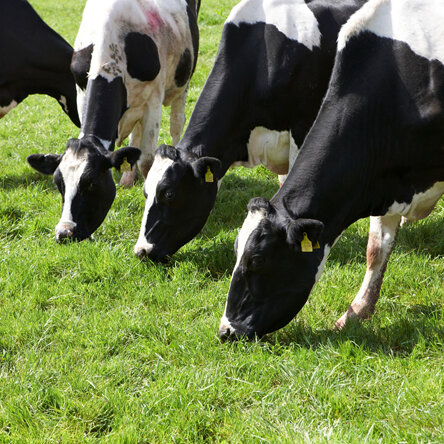Franklin Vets
Franklin Vets - excellence in veterinary care for dairy, farming, lifestyle, equine and household pets. BESTPRACTICE ACCREDITED NZ.
Your account is powered by Storbie. To edit your profile visit my.storbie.com
Your account is powered by Storbie. To edit your profile visit my.storbie.com

Without checking your levels, how do you know whether your cows are deficient, adequate or too high and at risk of toxicity? Also, how do you know whether your supplementation is matching cow daily requirements, is below requirements meaning cow levels are falling or above requirements meaning cow levels are rising? Short answer- you don’t!
We usually advise farmers to be checking blood and liver levels at least every 2-3 years and more frequently when there are significant changes in the diet.
There are a multitude of factors that affect a milking cow's copper status.
This year has not been a typical year! The wet winter followed by the exceptional growing conditions through summer and autumn are likely to have affected cows by increased soil ingestion (potentially reducing copper availability due to antagonists in soil) through the wet winter and, perhaps less copper availability due to decreased use of PKE on farms due to better pasture availability this summer and autumn.
All of this means copper levels may well be different in your herd this year and hence checking where you are at with liver biopsies and modifying your trace mineral supplementation program is likely to be prudent now.
There is a poor correlation between cow copper status and bloods, whereas liver biopsies give us a good indication of cow levels/ reserves. In most herds, liver biopsying 8 to 10 cows including 2-3 heifers is advised and if done frequently enough allows us to track whether supplementation is leading to stable, rising, or falling levels.
Selenium is much more simple to measure and supplement.
Copper demand depends on losses in milk and the foetus. Supply is dependent on selenium levels in pasture and supplements which are largely dictated by soil levels on your farm. Antagonists do not play a role in the uptake of selenium.
Testing can be via blood sampling of 6 to 8 cows. Selenium levels tend to vary much less between cows and hence small sample sizes tend to be representative of the whole herd making this cheap and easy to test.
There are a host of other trace minerals that are harder to measure and/ or we don’t have clearly identified target ranges. However, there is research to suggest these can be important in production/ reproduction/ health in lactating cows. Included in this group are cobalt iodine and manganese.
In most cases, we measure and focus attention on getting selenium and copper levels right and then supplement typical dose requirements of cobalt, iodine, and in some cases manganese because they are cheap and simple to supplement.
Whatever you are currently doing on your farm with trace mineral supplementation, now is a good time to check where you are at and work out a plan to make sure you have levels right as we head into mating for the autumn herds and calving for the spring herds. Call your vet now and make a plan!
Dr Jason Fayers BVM&S CertCHP (Cattle Health & Productivity)
Franklin Vets - excellence in veterinary care for dairy, farming, lifestyle, equine and household pets. BESTPRACTICE ACCREDITED NZ.



